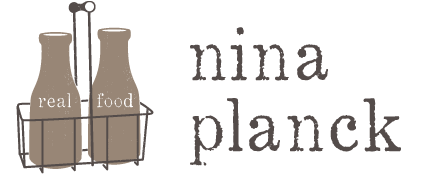Protein and Pregnancy
7/24/06
The New Yorker (July 24, 2006) a piece called 'The Preeclampsia Puzzle' neglected to mention a simple cause of the potentially fatal condition that affects 5% of pregnant women: poor nutrition. As prenatal experts know, the first stage of preeclampsia is toxemia, characterized by edema, hypertension, and protein in the urine. Happily, toxemia is easily prevented. In Let's Have Healthy Children (1951) Adelle Davis showed that toxemia is prevented by a diet rich in protein and B vitamins. If toxemia goes untreated and becomes preeclampsia, the potentially fatal convulsions that can occur have been treated with vitamin B6 and magnesium.
Today this basic nutritional knowledge is neglected. In my prenatal yoga class, the instructor (who is also a doula, who assists midwives) was advising pregnant women with swollen hands and feet to give up salt and drink more water. I don't agree. Long ago, prenatal nutrition experts like Dr. Tom Brewer established that these women need more protein, not less salt.
To build a baby you need abundant protein (and minerals and fats). The swelling and high blood pressure of toxemia are signs that all is not well - a warning that a more serious condition, preeclampsia, could follow. Eat beef, poultry, or fish daily. At lunch I often have a can of wild Alaskan salmon. It's inexpensive and convenient, and one tin contains 3.5 servings. I eat the whole thing.
Why do pregnant women need adequate salt? To increase our blood volume by about 50%. It's always wise to be well-hydrated, but drinking more water alone won't bring down your blood pressure, reduce swellling, or help your body make more blood. For new blood you need plenty of protein and iron-rich foods like red meat.
I use unrefined sea salt (which, unlike typical refined table salt, contains vital trace elements) liberally. How liberally? Well, I never count grams or milligrams of any food, but I salt all unprocessed real food (meat, fish, poultry, eggs, grains, vegetables, even watermelon) during cooking or at the table - or both - to taste. I use more salt when I'm exercising or sweating a lot. As my midwife, Linda Perry, says, 'Drink to thirst and salt to taste.'

